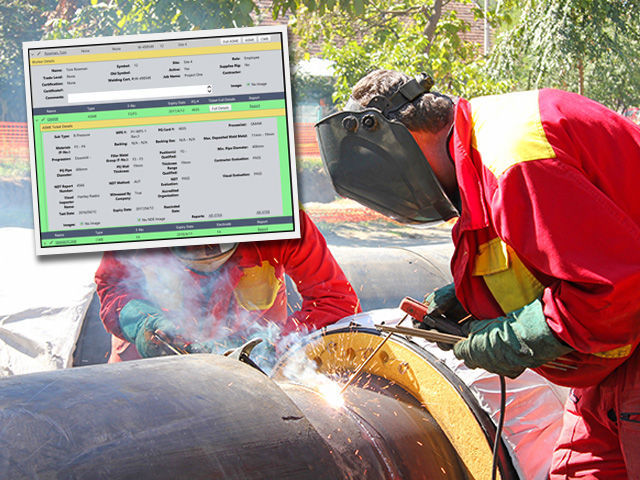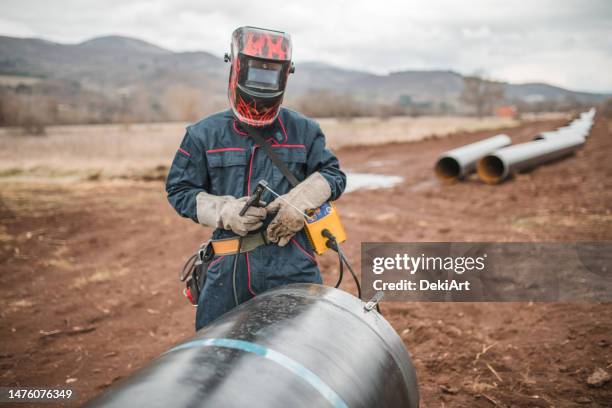Making Certain Resilience with Thorough Pipeline Welding Inspection
Recognizing the Basics of Pipeline Welding Assessment: Critical Variables for Assessing Weld Quality and Stopping Failures
In the realm of pipeline welding evaluation, the risks are without a doubt high, necessitating an extensive understanding of basic principles to ensure weld high quality and mitigate failure dangers. Numerous important elements enter into play, consisting of the selection of appropriate products, the application of sophisticated evaluation strategies, and the acknowledgment of common welding flaws. In addition, adherence to regulative standards plays a crucial role in keeping system integrity. Yet, the intricacies integral in these processes elevate essential questions about best methods and emerging technologies that might redefine evaluation methods-- inquiries that warrant further exploration.
Importance of Weld High Quality
The stability of a pipeline is essentially dependent on the top quality of its welds, making weld quality an important consider ensuring reliable and safe procedure. A pipe weld offers as a junction point where materials are signed up with, and any kind of shortages in this field can bring about substantial structural weaknesses. Poor bonded high quality can lead to leaks, ruptures, and disastrous failings, posing serious security dangers and environmental threats.
Several elements add to the quality of a weld, consisting of the selection of welding process, the abilities of the welder, and the conditions under which the welding is executed - Pipeline Welding Inspection. Inadequate prep work, improper warm input, and contamination can compromise weld integrity, bring about problems such as porosity, insufficient blend, or cracks. For that reason, strict quality assurance measures should be applied throughout the welding procedure to alleviate these threats
In addition, the lasting performance of a pipeline is greatly influenced by the sturdiness of its welds. High-quality welds not just enhance the overall toughness of the pipe yet additionally extend its life span, lowering the need for pricey repairs and downtime. Thus, guaranteeing exceptional weld quality is vital in pipe layout and upkeep techniques.
Key Assessment Strategies
Making sure weld high quality requires the execution of effective examination strategies to determine prospective defects before they result in failings. Pipeline Welding Inspection. Among one of the most widely utilized techniques are visual assessment, radiographic testing (RT), ultrasonic screening (UT), and magnetic fragment testing (MT) Each method is and serves an unique purpose selected based on the details demands of the pipeline task
Aesthetic examination is the very first line of protection, permitting examiners to analyze surface area conditions, positioning, and overall craftsmanship. Radiographic testing offers a detailed sight of internal weld honesty by utilizing X-rays or gamma rays to discover subsurface problems.
Ultrasonic screening uses high-frequency audio waves to assess the density and integrity of welds, making it excellent for identifying internal gaps. Magnetic bit screening is a reliable approach for determining surface area and near-surface flaws on ferromagnetic materials by applying electromagnetic fields and great ferrous bits. By utilizing these vital examination methods, pipeline welding examiners can guarantee the finest requirements are maintained, eventually bring about safer and extra dependable pipe systems.
Common Welding Problems
Among the most prevalent issues are porosity, which takes place when gas entraps in the weld metal, developing gaps that deteriorate the joint. An additional significant problem is absence of combination, where the weld steel does not adequately bond with the base material, compromising the joint's toughness.

Fractures are additionally a vital worry, materializing in different forms such as hot fractures, cool cracks, and origin fractures. Each type positions distinct difficulties and needs details assessment strategies for detection. Undercut is another issue that can decrease the weld's cross-sectional location, causing anxiety focus points, while slag addition takes place when non-metallic product ends up being entraped in the weld pool, detrimentally affecting the mechanical buildings of the weld.
Additionally, wrong bead form can result in unequal stress and anxiety circulation. Recognizing these usual problems is vital for assessors and welders alike, as early discovery and correction are important to making sure the longevity and integrity of pipeline systems.

Materials and Their Effect
Choosing the suitable materials for pipe welding dramatically influences the overall performance and reliability of the welded best site joints. The option of base steels, filler products, and coverings plays a crucial duty in identifying the strength, deterioration resistance, and resilience of the welds. For circumstances, carbon steel is generally used for its equilibrium of toughness and cost, but it may be prone to deterioration in specific settings, requiring using corrosion-resistant alloys or safety coatings.
In addition, dissimilar metal welding calls for mindful consideration of thermal development homes and possible galvanic corrosion. The compatibility of products can substantially affect the microstructure of the weld, resulting in variants in mechanical residential or commercial properties. For example, stainless-steel provides excellent rust resistance yet might need specific filler products to make sure an audio weld joint.
Furthermore, the impact of temperature and environmental conditions on material choice can not be underestimated. High-strength steels might lose ductility at elevated temperatures, while low-temperature applications may call for materials with enhanced sturdiness. Inevitably, comprehending the effects of product options is crucial for attaining optimum weld top quality and avoiding failures in pipe systems.

Regulatory Standards and Compliance
Regulatory requirements and compliance play a critical function in pipeline welding, establishing the framework within which risk-free and efficient practices are maintained. These standards are created by various companies, consisting of the American Culture of Mechanical Engineers (ASME), the American Welding Culture (AWS), and the Pipe and Hazardous Products Safety Management (PHMSA) Sticking to these policies ensures that welding treatments fulfill the needed quality and safety standards.
Conformity with regulatory criteria is necessary not just for ensuring the stability of the welds yet likewise for safeguarding the environment and public safety and security. Inspectors are charged with verifying that welding operations follow these criteria via strenuous evaluations of both the procedures and the final welds. This includes examining welder qualifications, welding treatments, and the products made use of.
Failure to follow well established laws can result in considerable effects, including pricey repair services, lawful responsibilities, and disastrous failings. Consequently, companies must integrate compliance right into their functional methods, cultivating a culture of safety and security and quality. Normal training and audits are crucial parts in preserving adherence to these regulatory standards, guaranteeing that all workers are knowledgeable and geared up to maintain the try this site greatest levels of pipe welding quality.
Verdict
In final thought, a detailed understanding of pipeline welding evaluation is crucial for guaranteeing weld quality and avoiding failings. By using vital evaluation techniques and identifying usual welding issues, examiners can effectively assess the honesty of welds.
In the world of pipe welding evaluation, the stakes are unquestionably high, requiring a detailed understanding of essential principles to ensure weld top quality and reduce failing dangers (Pipeline Welding Inspection).The honesty of a pipeline is fundamentally dependent on the high quality linked here of its welds, making weld top quality an important element in making certain risk-free and reliable procedure.Numerous elements contribute to the quality of a weld, consisting of the selection of welding procedure, the abilities of the welder, and the problems under which the welding is done. Undercut is an additional issue that can decrease the weld's cross-sectional location, leading to anxiety focus points, while slag incorporation happens when non-metallic product comes to be entraped in the weld swimming pool, detrimentally affecting the mechanical properties of the weld
In conclusion, an extensive understanding of pipeline welding evaluation is vital for ensuring weld quality and preventing failures.